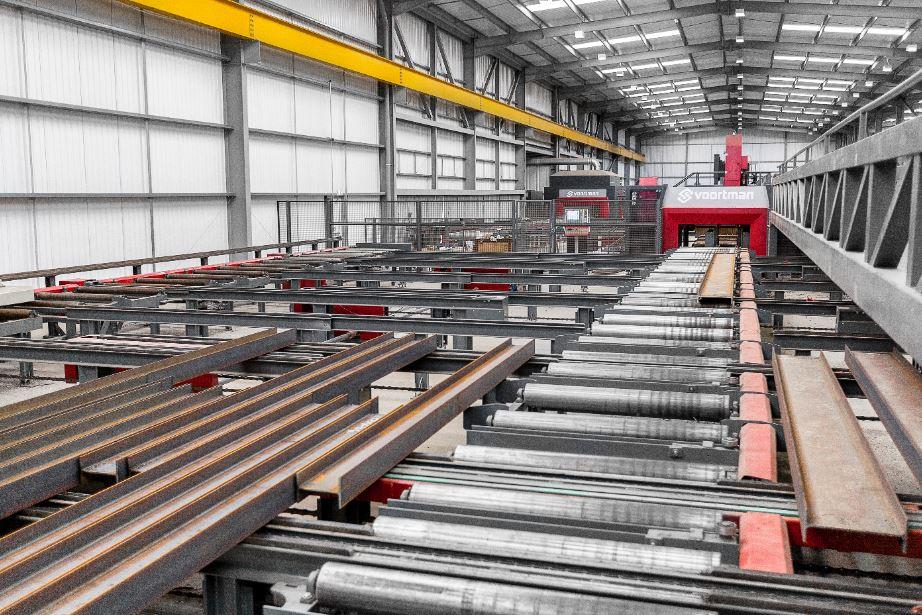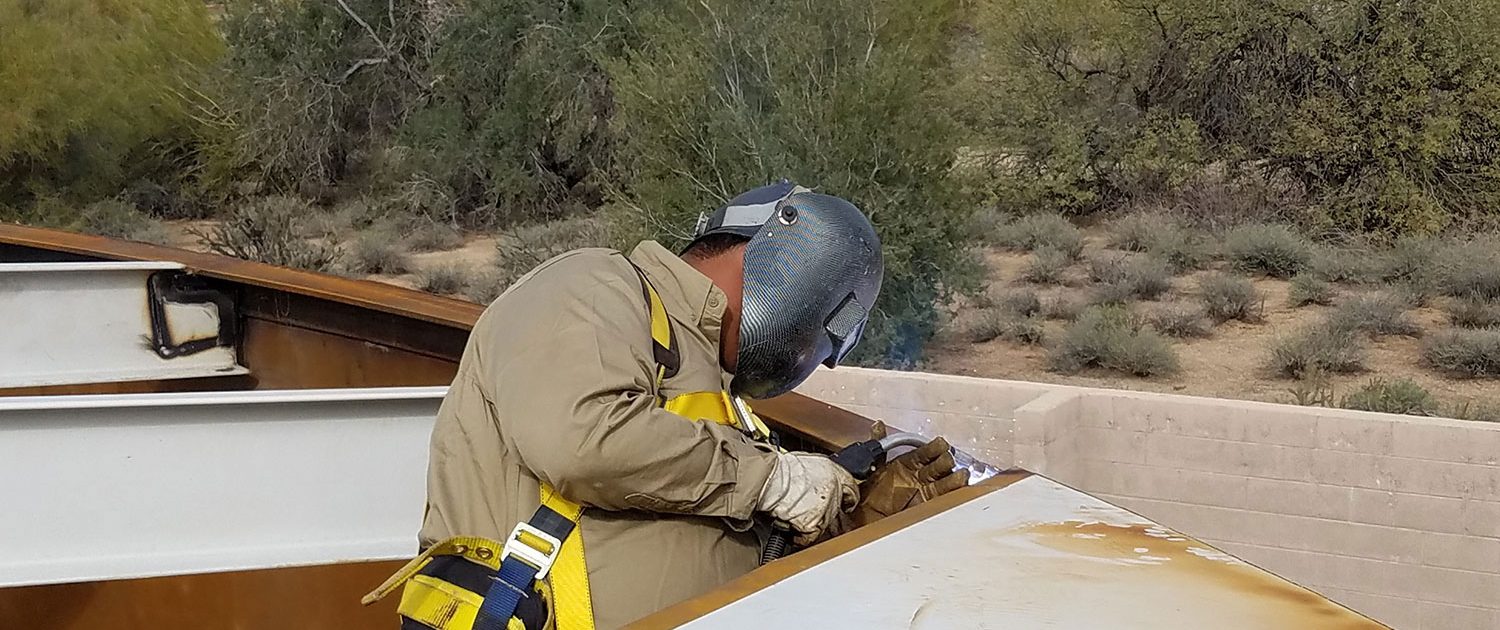Alpha Reo: Blazing A Trail in Reinforced Steel Solutions
Alpha Reo: Blazing A Trail in Reinforced Steel Solutions
Blog Article
Innovative Patterns in Steel Fabrication: Enhancing Longevity and Precision
In the realm of steel manufacture, the pursuit of toughness and accuracy has resulted in a wave of cutting-edge fads that are improving the industry. From developments in welding technologies to the assimilation of robotic automation in fabrication procedures, the landscape of steel production is evolving rapidly. High-strength alloy advancement, paired with the application of 3D modeling and simulation software, is pressing the boundaries of what is attainable in terms of architectural stability and accuracy. The growing emphasis on sustainable practices in steel manufacturing is not just driving performance yet additionally fostering a much more ecologically aware method to construction. These fads are not simply shaping the existing however additionally preparing for the future of steel construction, promising additional enhancements in durability and accuracy.
Advanced Welding Technologies
In the realm of steel construction, the adoption of innovative welding technologies has actually significantly changed the market's method to achieving exceptional high quality and precision in architectural welds. Advanced welding modern technologies, such as laser light beam welding and friction mix welding, have arised as game-changers in the area. By leveraging these sophisticated welding strategies, steel fabricators can boost the resilience, toughness, and precision of their architectural welds, fulfilling the increasingly requiring requirements of contemporary building and construction projects.
Robot Automation in Fabrication
Accepting robot automation has actually become a foundation of modern-day steel fabrication methods, enhancing and enhancing procedures efficiency across the market. Robots are changing the means steel components are manufactured, using unparalleled precision and speed while decreasing human mistake. These automated systems can manage recurring jobs with regular precision, leading to better final product.
One secret advantage of robotic automation in steel construction is the capability to work all the time without exhaustion, dramatically raising manufacturing result. This continual procedure decreases downtime and increases task timelines, inevitably conserving expenses for makers. Furthermore, robots can be configured to carry out elaborate tasks that might be tough or unsafe for human employees, boosting safety and security in the work environment.
In addition, robotic automation makes it possible for seamless combination with various other digital technologies, such as computer-aided design (CAD) software application and Net of Things (IoT) systems (metal fabrication melbourne). This interconnected method improves interaction in between different stages of construction, maximizing workflows and guaranteeing real-time tracking and control. As the steel manufacture industry remains to develop, robot automation attracts attention as a transformative pressure driving efficiency and precision in producing processes

High-Strength Alloy Development
The advancement of high-strength alloy development in steel fabrication is reshaping the industry's approach to enhancing material resilience and performance. High-strength alloys are engineered to show superior mechanical residential or commercial properties, such as enhanced tensile strength, toughness, and corrosion resistance contrasted to typical steel qualities. By integrating these sophisticated alloys into fabrication processes, suppliers can generate elements that stand up to higher stress degrees and rough settings, click here now causing more trusted and sturdy final product.
One key advantage of high-strength alloy growth is the capability to reduce product thickness without compromising architectural stability. This not only causes lighter-weight elements yet likewise contributes to set you back savings and boosted effectiveness in fabrication and setting up processes. Additionally, the improved strength-to-weight ratio of these alloys enables the layout and construction of frameworks with higher load-bearing capabilities while reducing general weight.
3D Modeling and Simulation Software
Innovations in steel construction procedures have been significantly driven by the integration of sophisticated 3D modeling and simulation software devices. These devices enable makers to develop comprehensive virtual designs of their jobs, enabling them to picture the final item with accuracy prior to any manual labor starts. By simulating numerous stress aspects, ecological conditions, and structural lots, producers can optimize layouts for boosted toughness and performance. Furthermore, 3D modeling and simulation software program streamline the production process by recognizing potential issues early, lowering the need for costly rework and reducing product waste.

Lasting Practices in Steel Production
Integrating lasting methods right into steel production procedures is important for decreasing environmental influence and guaranteeing lasting resource accessibility. One vital sustainable technique is the adoption of energy-efficient innovations to lower greenhouse gas discharges throughout the steel production process. This consists of making use of renewable power resources, such as solar or wind power, to power steel plants and implementing energy-efficient devices to maximize energy usage.
One more crucial element of sustainable steel production is the accountable sourcing of resources. This involves guaranteeing that the iron ore and various other sources used in steelmaking are obtained from environmentally friendly and honest resources. By advertising openness in the supply chain and sticking to strict environmental standards, steel manufacturers can reduce the unfavorable influences of source removal on neighborhood ecosystems and areas.

Final Thought
In final thought, the innovative trends in steel manufacture such as innovative welding modern technologies, robotic automation, high-strength alloy development, 3D modeling and simulation software program, and lasting practices are boosting the longevity and accuracy of steel products. These innovations are reinventing the steel fabrication sector by enhancing sustainability, performance, and high quality. It is clear that the future of steel fabrication exists in embracing these sophisticated technologies to fulfill the demands of modern-day construction and production industries.
In the world of steel manufacture, the quest of durability and precision has actually led to a wave of innovative patterns that are improving the industry.In the world of steel manufacture, the adoption of sophisticated welding technologies has dramatically transformed the sector's approach to accomplishing premium quality go to this website and precision in architectural welds. As the steel manufacture industry continues to progress, robot automation stands out as a transformative force driving performance and precision in producing procedures.
In addition, recycling and reusing steel scrap and waste materials play a considerable duty in enhancing the sustainability of steel production. Alpha reo.In final thought, the innovative trends in steel fabrication such as advanced welding innovations, robot automation, high-strength alloy advancement, 3D modeling and simulation software application, and lasting techniques are enhancing the sturdiness and accuracy of steel items
Report this page